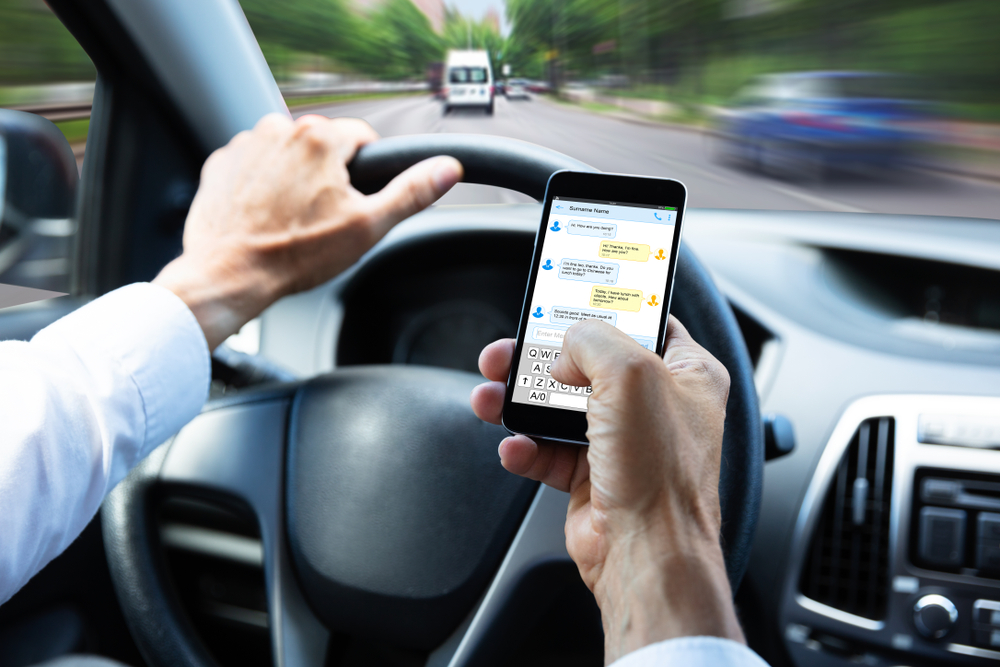
As a practice that fights for victims injured in auto accidents, The Perecman Firm, P.L.L.C., knows driver distraction can have devastating consequences. This April, we’re proud to support Distracted Driving Awareness Month and remind everyone that they have the power to keep themselves and others safe.
We encourage you to get involved and take the NSC’s #JustDrive pledge.
The Facts on Distracted Driving
NHTSA defines distracted driving as anything that diverts attention away from driving. This includes:
- Visual attention, or taking your eyes off the road;
- Manual attention, taking your hands off the wheel; and
- Cognitive attention, which means your mind is elsewhere.
According to new NSC estimates, U.S. roads are more dangerous than ever. In 2021 alone, there were 46,020 motor vehicle deaths – a 9% increase from 42,339 in 2020 and an 18% increase from 39,107 in 2019. The NSC estimates that on a typical day, eight people are killed and hundreds more are injured in distracted-affected crashes.
Distraction also remains a major concern among younger drivers, with roughly a quarter of all distracted motorists involved in fatal crashes being between the ages of 20 to 29. But make no mistake about it, distraction is a problem that affects motorists of all ages.
Some of the most common driver distractions:
- Talking or texting on a cell phone
- Programming maps / GPS
- Eating and drinking
- Talking to passengers
- Adjusting the stereo
- Watching a video
- Personal grooming
While some types of distracted driving are more dangerous because they command a person’s manual, cognitive, and visual attention simultaneously, there is no such thing as a safe distraction. Even hands-free has risks; talking on a cell phone makes a person’s brain toggle between two tasks, which can slow reaction time and make them more likely to crash.
As data from NHTSA and the NSC show:
- Drivers who talk on the phone fail to see 50% of their surroundings.
- Just listening to a cell phone conversation decreases brain activity associated with driving by over one-third.
- At 55 mph, looking away from the road for 5 seconds (the average time it takes to read or send a text) is like traveling the length of an entire football field with your eyes closed.
Tips to Avoid Distracted Driving
This April, you can show your support for Distracted Driving Awareness Month by evaluating your driving behaviors and adopting safe habits.
Whether you’re a driver, passenger, or parent, there are many things you can do:
- Set up before you set off. Whenever you get into your vehicle, take some time to set up your drive, GPS, and playlist before you start moving.
- Pull over and park. If you need to send a text, make a call, or check your phone for any reason, find a place to pull over and park.
- Text and talk later. Commit to keeping your phone out of access by storing it in the glove box or back seat until you arrive at your destination. You can also set up an auto-response that lets people know you are driving and will respond later.
- Be a designated texter. If you are a passenger, volunteer to be a designated texter and respond to calls or messages so your driver can concentrate on the road. Passengers can also help navigate, look for items in the vehicle, or adjust radio and climate controls.
- Talk to your kids. If you’re the parent of a newly licensed or younger driver, talk to your children about the risks of distractions and practice what you preach. Cell phone use is habit-forming, so encourage healthy habits for your young driver.
Steps You Can Take After a Distracted Driving Crash
Even if you take every precaution to avoid distractions, there’s no guarantee other drivers will do the same. That’s why it is important to know what steps you can take to protect everyone’s safety and your rights after a distracted driving accident:
- Call 911. Check to see if you, your passenger(s), and anyone involved in the crash has been injured and call 911 to ensure emergency help is sent right away.
- Get a police report. Calling 911 means a law enforcement officer will arrive to help and take a police report. If you decide to pursue a personal injury claim, the police report can serve as important evidence, especially if it notes the other driver was distracted.
- Exchange information. If you can, exchange contact, vehicle, and insurance information with other drivers involved. It’s also a good idea to get information from witnesses who may have seen what happened or whether a driver was distracted, and to take photos of the scene.
- Follow up with medical treatment. Always follow up with medical treatment and listen to your doctor’s recommendations. Failing to follow up can put you at risk for more serious or recurrent problems. If you’re concerned about how you’ll pay for your medical care, you may be able to pursue a claim against the at-fault driver to recover compensation for your medical bills and other damages, such as lost income and pain and suffering.
- Talk to an attorney. Following an accident, victims may wish to seek the guidance of an attorney who has experience representing individuals in car accident matters. A personal injury attorney will be able to review the details of the accident and advise on the best course of legal action.
The Perecman Firm, P.L.L.C., is available 24/7 to help accident victims understand their legal options and how our award-winning team may be able to help. If you have questions, call (212) 577-9325 or contact us online for a free consultation.



